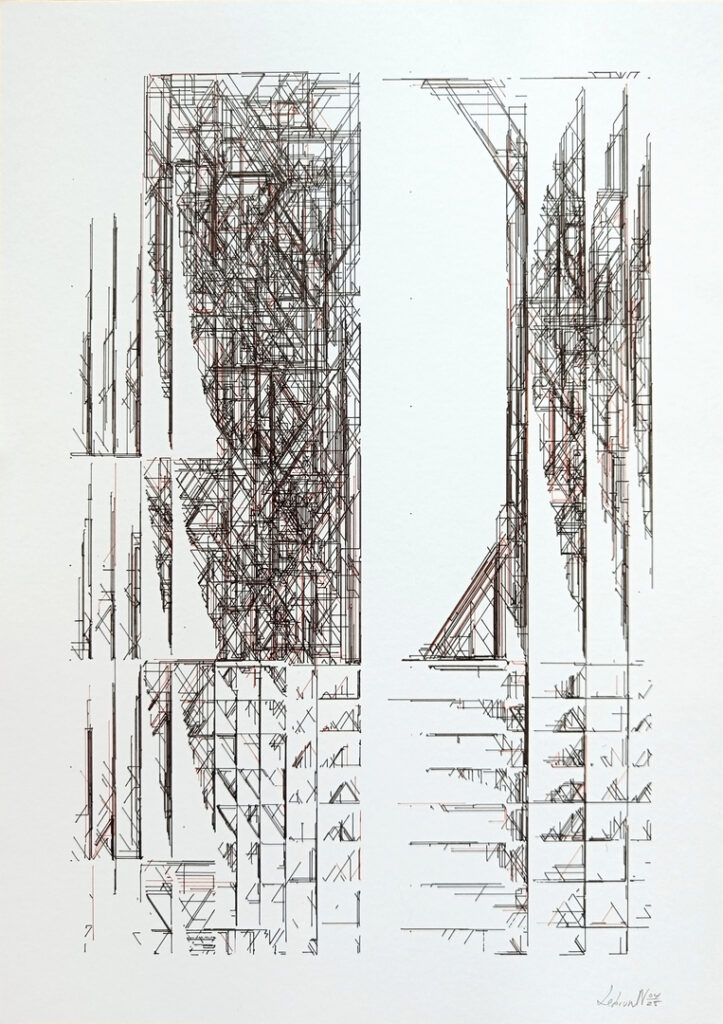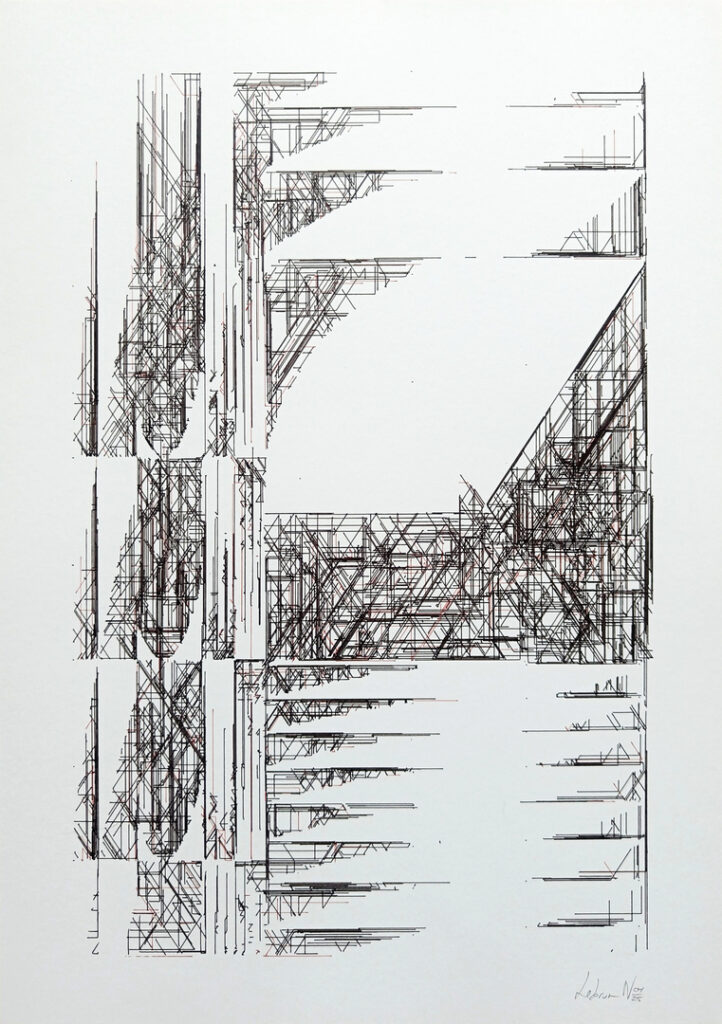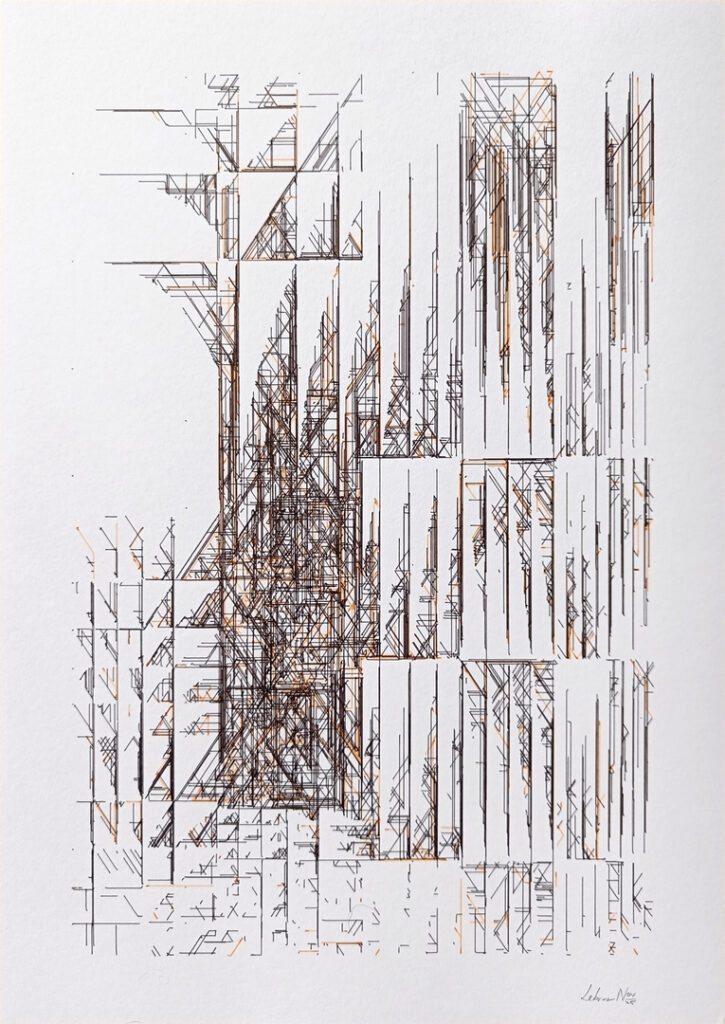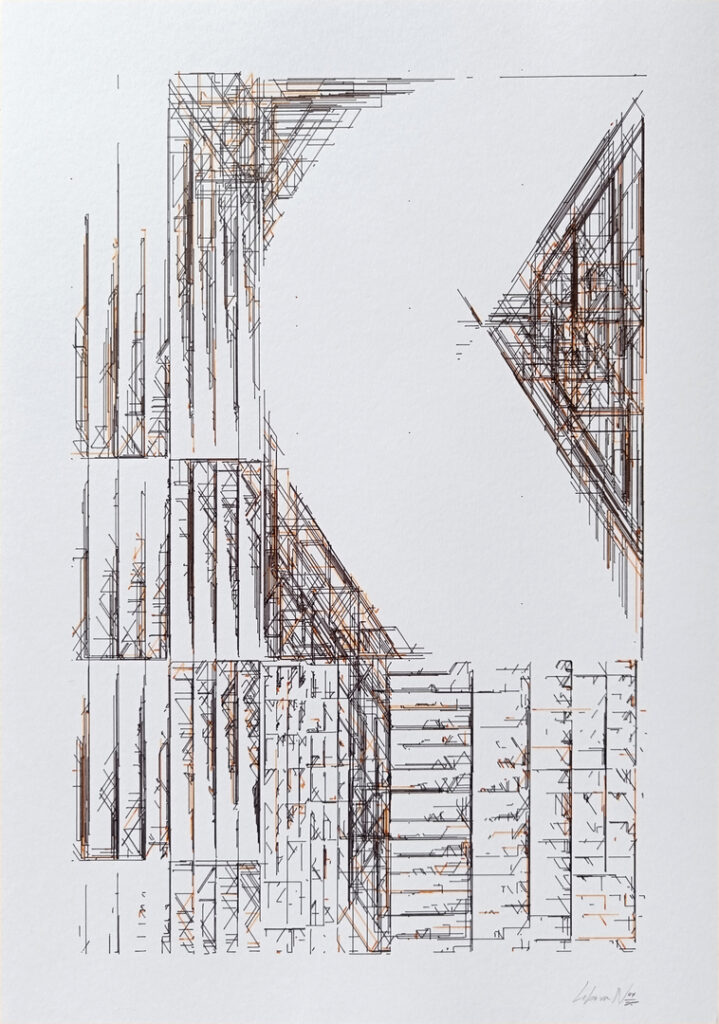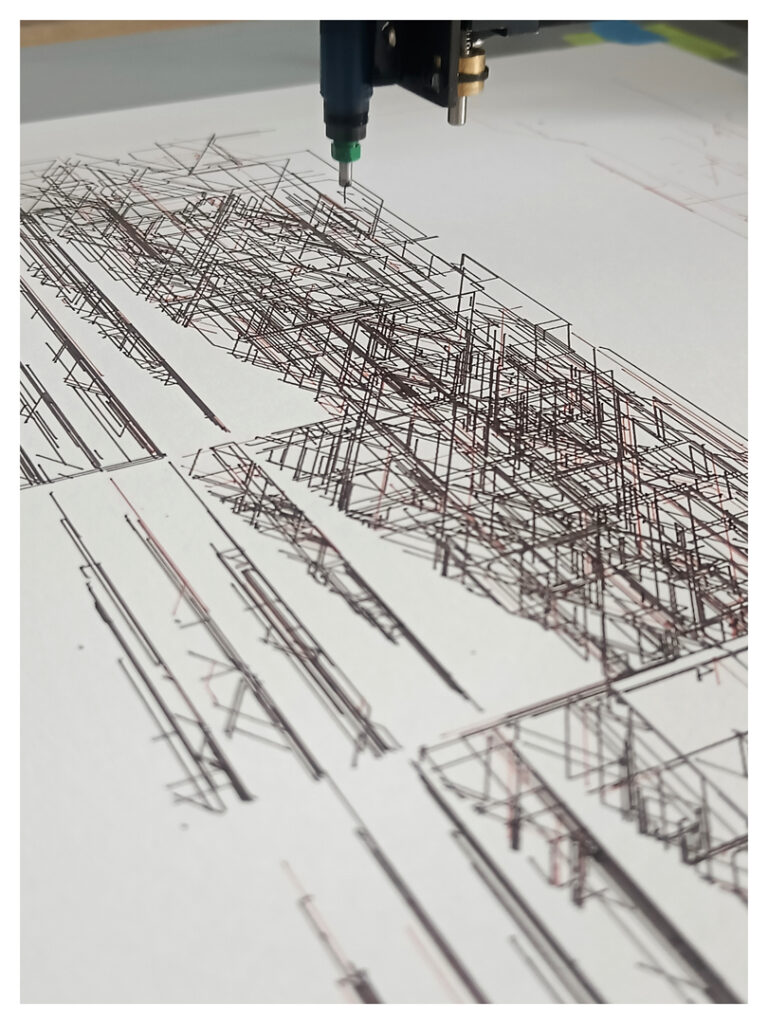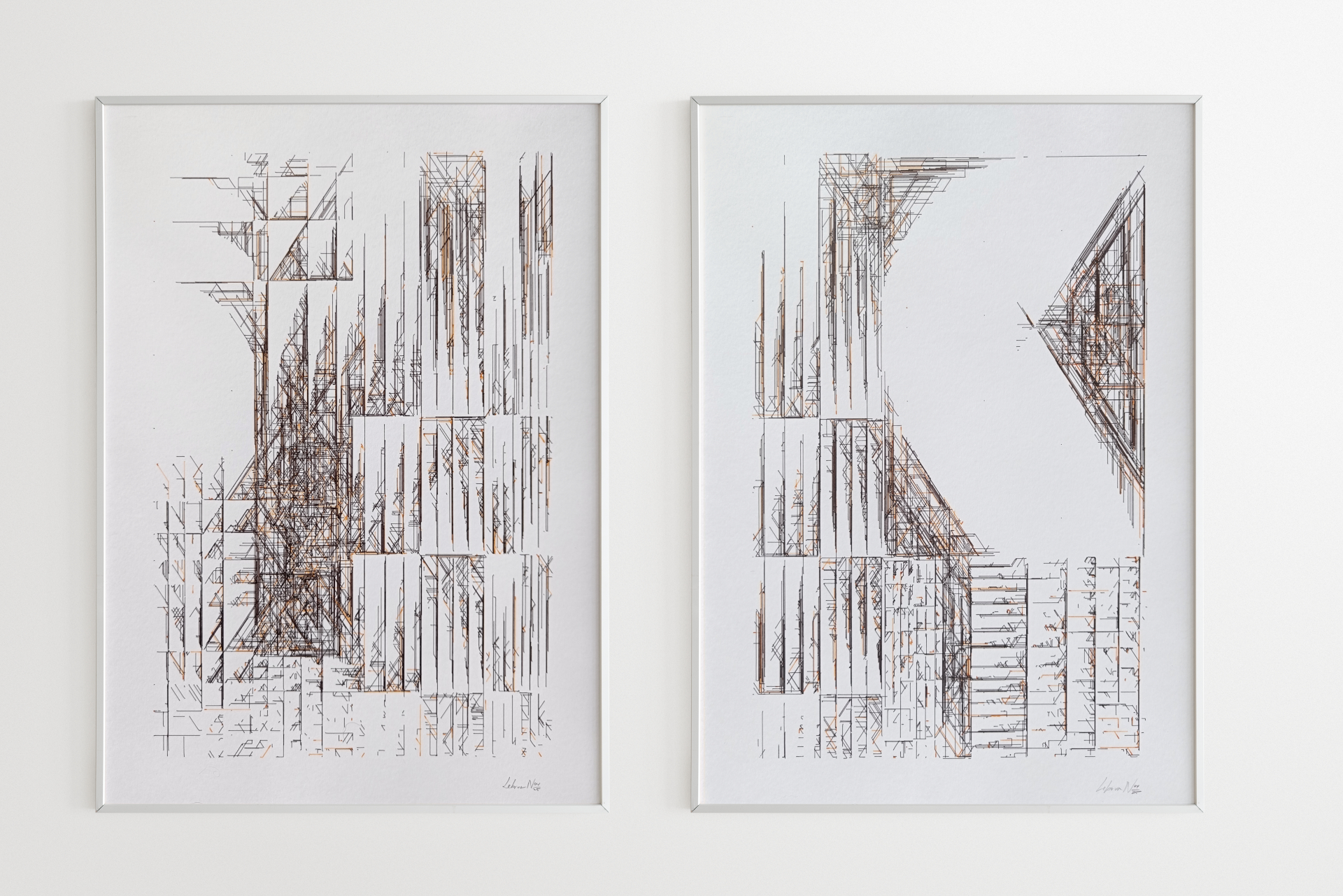
GLSL and JavaScript programming, pen plotter DIN A3 (11.69x16.53 in), 2025.
This project is the fourth evolution of the Variaciones Circa Triangula protocol, which gives rise to different series that all use the same graphic element, the triangle. Like the other series in this body of work, this generative project is based on a central element, the modular grid, whose cells differ in height and width.
Using this grid, and within each cell, the program will trace a succession of triangles, varying their heights and widths. This composition, made up of triangles filled with black on a white background, will be captured and then interpreted during subsequent program execution.
To fill in the previously generated shapes, the program will place points equidistant from each other. Using an algorithm called the random walker, these points will be able to move like a queen on a chess board. For all these points, a maximum movement distance is set, and an axis is chosen for each move. Here, the checkerboard is replaced by the previously generated composition, and the points can only move on dark squares, where triangles have been previously drawn. If, in the interval between its point of origin and its point of arrival, it encounters an unbroken surface, its progress stops and it can try again to move on another axis a certain number of times before coming to a definitive halt.
Although the program does not use artificial intelligence to draw up the paths, the program’s degree of autonomy and the fact that it interprets the result of an initial calculation itself give this project a self-reflexive dimension. This two-stage implementation, with two distinct processes, gives the program the ability to analyze and reinterpret its own work.
